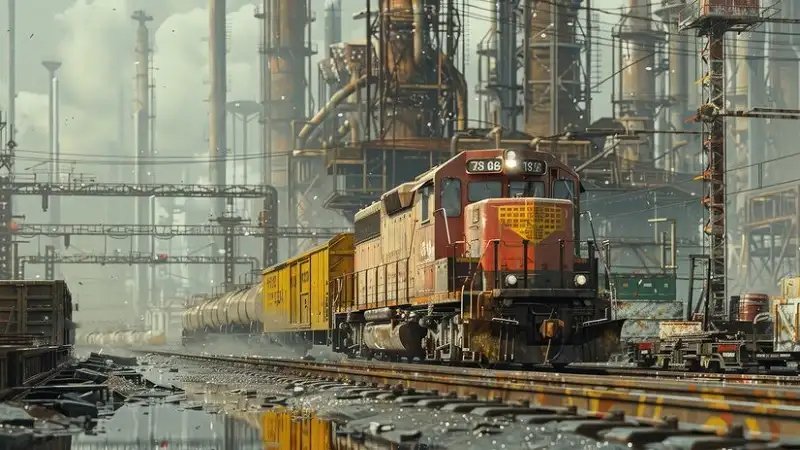The industrial revolution brought about massive changes in transportation, with the advent of the steam locomotive marking a significant breakthrough. Understanding how steam locomotives lowered the cost of transporting raw materials and finished goods helps us appreciate the profound impact they had on the global economy. This article will explore the ways in which steam-powered trains reduced transportation costs and revolutionized industry.
1. Introduction: How Did Steam Locomotives Lower the Cost of Transporting Raw Materials and Finished Goods?
To fully grasp how steam locomotives lowered the cost of transporting raw materials and finished goods, it’s essential to consider the logistical challenges before their invention. Prior to steam engines, the transportation of goods was a slow, costly process, relying on animals or water-based methods like canals. The advent of the steam locomotive changed this landscape by providing faster, more reliable, and larger-scale movement of materials and products.
Key Innovations:
- Increased Capacity and Speed: Steam engines moved large quantities of materials at high speeds, minimizing delays and maximizing efficiency.
- Reduced Labor Requirements: Fewer workers were needed to transport more goods, cutting labor costs significantly.
2. Reducing Labor and Operational Costs
One of the critical factors in how steam locomotives lowered the cost of transporting raw materials and finished goods was their ability to reduce labor and operational costs. Before steam engines, moving large quantities of goods required many workers, teams of horses, and time-intensive processes. Steam locomotives, however, required fewer hands to operate, and their mechanized power made it possible to transport heavier loads without the need for manual labor.
By streamlining operations, steam engines reduced the human resource burden, which in turn reduced costs for industries relying on transportation. This cost-saving efficiency was crucial to expanding industries, allowing them to focus resources on production rather than logistics.
Key Labor Cost Benefits:
- Fewer workers required for transportation: Steam locomotives replaced many manual laborers previously needed to transport goods.
- Increased operational efficiency: Trains could run longer and carry more cargo, reducing the need for multiple journeys.
3. Economies of Scale: Mass Transport and Cost Efficiency
Another significant reason how steam locomotives lowered the cost of transporting raw materials and finished goods lies in the concept of economies of scale. Steam-powered trains could carry far more goods in one trip compared to horse-drawn carts or canal boats. This increased capacity meant that the per-unit cost of transporting raw materials like coal, iron, or timber decreased dramatically.
Moreover, trains allowed industries to centralize their production in locations where raw materials were abundant, without worrying about excessive transportation costs. Similarly, finished goods could be shipped to broader markets, reducing the costs associated with distance.
Impact of Mass Transport:
- Large volumes at lower costs: The high capacity of steam locomotives lowered costs by transporting goods in bulk.
- Geographical flexibility: Industries could source raw materials from farther afield without significantly increasing costs.
4. Infrastructure and Market Expansion
A significant part of how steam locomotives lowered the cost of transporting raw materials and finished goods can be attributed to the expansion of rail infrastructure. As rail networks grew, industries and businesses gained access to previously inaccessible markets, allowing them to source cheaper raw materials and ship finished goods to new consumers at a reduced cost. This expansion was a key driver of economic growth during the 19th century.
The integration of rail networks into supply chains made the process of transporting goods more reliable and consistent, further reducing costs by eliminating the risks and delays associated with other forms of transport like waterways or animal-drawn carts.
Infrastructure Impact:
- Expanded rail networks: Railroads connected resource-rich regions with industrial hubs, lowering costs through more direct routes.
- Greater market access: Finished goods could be transported to distant markets at reduced costs, increasing profitability for producers.
5. Conclusion: The Impact of Steam Locomotives on Transportation Costs
To summarize how lowered the cost of transporting raw materials and finished goods, it is clear that their contribution was multifaceted. From reducing labor and operational costs to maximizing economies of scale, steam-powered trains revolutionized transportation and logistics. Their role in the expansion of rail infrastructure opened new markets and enhanced the flow of raw materials, leading to widespread industrial growth.
The cost-saving effects of steam locomotives were crucial to the success of many industries during the industrial revolution and continue to influence modern transportation today. By understanding how steam locomotives lowered the cost of and finished goods, we can better appreciate their role in shaping the global economy. Read More D2armorpicker.
